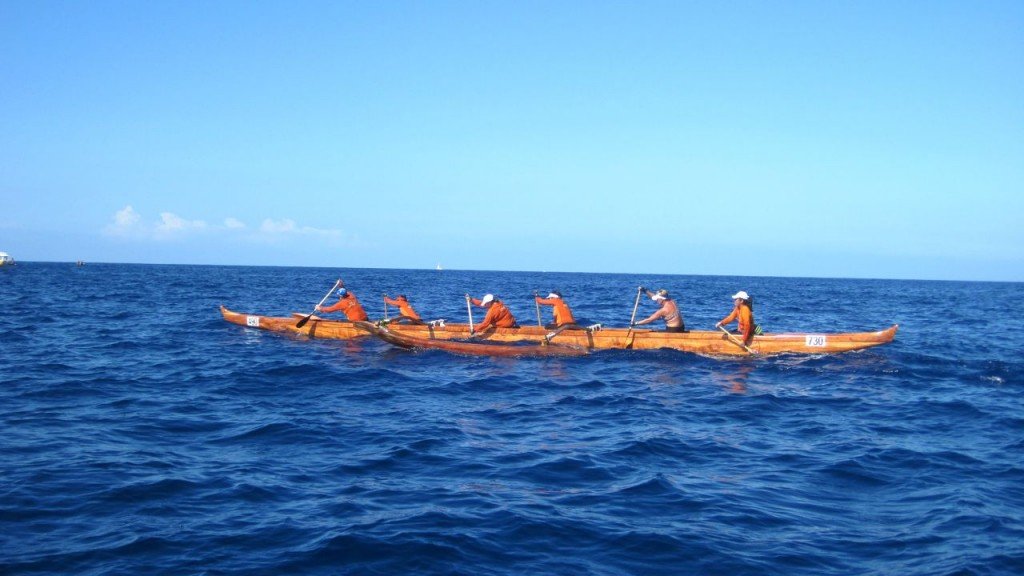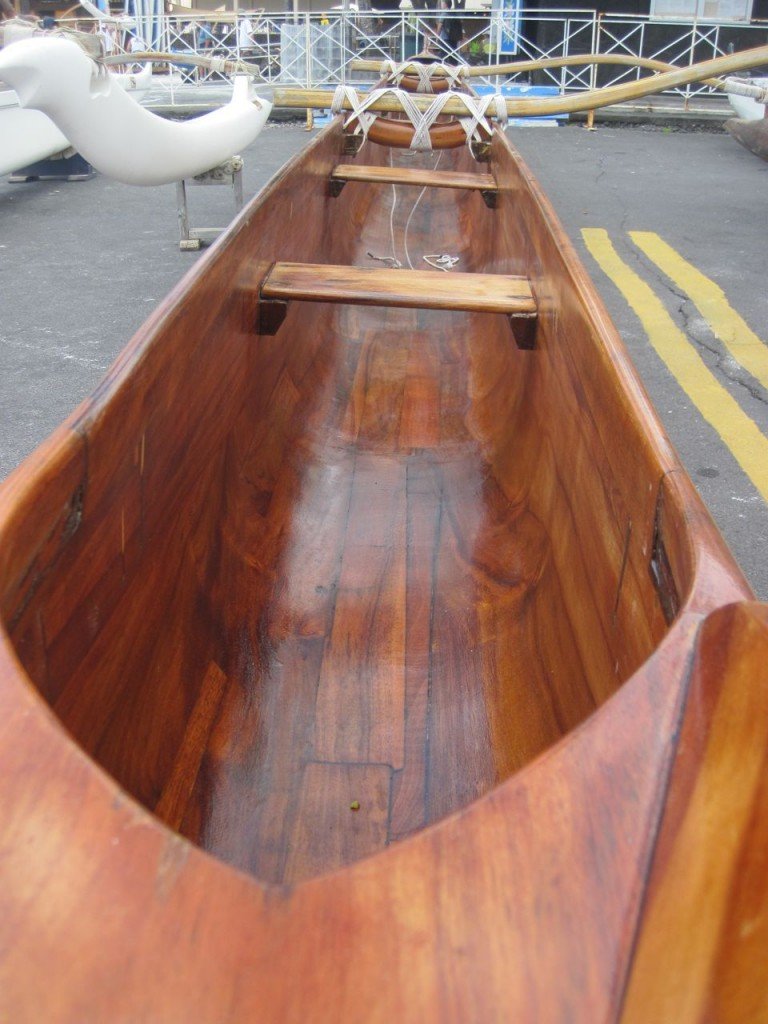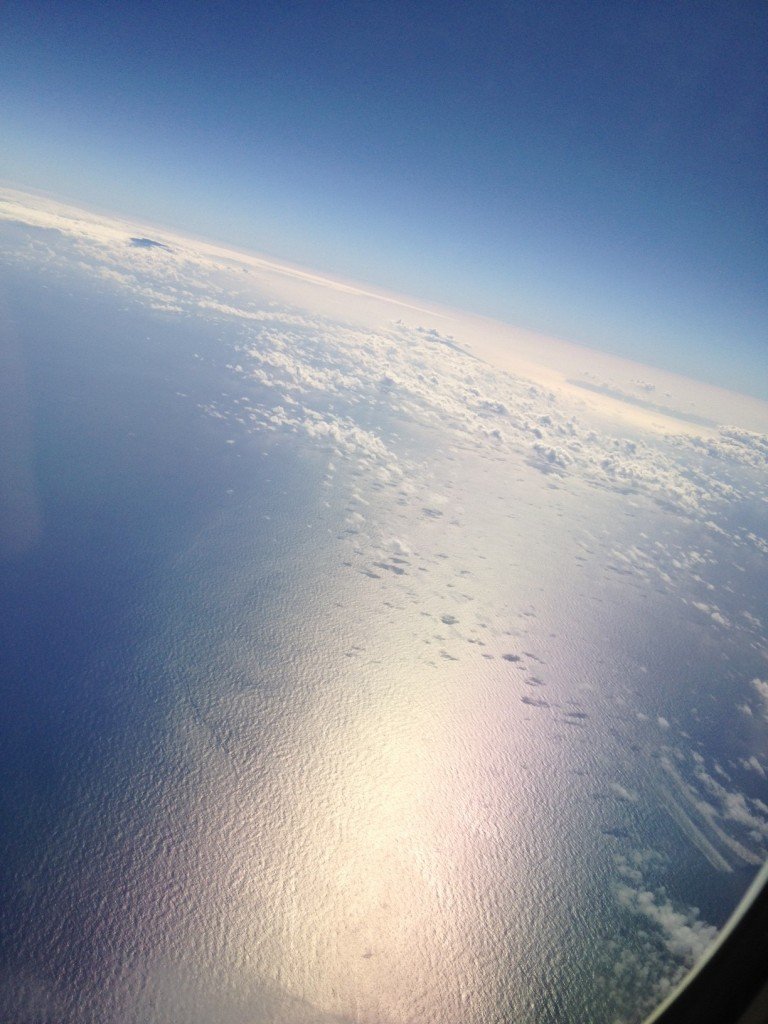The outrigger canoe race held in honor of the birthday of Queen Lili’uokalani runs on Labor Day Weekend. This year was the 40th Queen’s race and had a record number of entrants: 137 women’s crews and 142 men’s crews. 40% of the entering crews were international crews, from places as far afield as Australia, Hong Kong, Canada, Japan, and the UK.
Here is the beach before the start, with a very few of the six-seat canoes rigged and ready to go. Note the difference between the koa (wood) canoes and the colorful (fiberglass) canoes.

There are actually three days worth of various races, but the main race is on Saturday. To quote the Honolulu Star-Advertiser article (which I can’t link to because it is behind a firewall):
The main race goes between two historic landmarks: Kamakahonu Bay, King Kamehameha’s capital for Hawaii in 1812-1819; and Pu’uhonua O Honaunau Natural Park, 18 miles away. Six-man crews may either paddle the race “iron” with six paddlers for the entire distance, or nine paddlers, who change out form an accompanying escort boat.
As an aside, if you ever visit the Big Island, I strongly recommend you visit Pu’uhonua O Honaunau National Park (aka The Place of Refuge), because it is stunningly beautiful, historically significant, and with enough information to give the visitor a basic sense of what it is and why it matters in Hawaiian history and indeed in the history of humankind.
Na wahine o Manu o Ke Kai (the women of the canoe club Manu o Ke Kai) took two nine-paddler (change) crews, one Masters 40 (all paddlers over 40) and one Senior Masters 50 (all paddlers over 50). Our Masters 40 crew won their division; we came in third in ours. Two Manu men’s crews, Open and Grand Masters (over 60) also participated as “iron”- Our Men’s Open crew had a phenomenal finish, coming in 10th overall out of 142 men’s crews. Also, most crews in this race go iron. We go changes because we just like the water too much; the water off the Kona coast is clear, warm, and lovely.
This is not a hard race if you’re doing changes. The water (waves, currents, winds) is not usually challenging, the distance is not long compared to most races with changes (like the Molokai’i-Oahu race, at 42 miles), and the weather is usually cooperative.
What made it particularly special for our crew this year was our opportunity to paddle the race in a koa canoe. Again, I’ll quote from the Star-Advertiser article:
The race has a high number of traditional koa canoes attending, because the generally calm waters of the Kona Coast are safe for the prized treasures.
Here is Kupa’a (strength, steadfast), in the water during the race with Karen, Gloria, Yolie, Jane, Julie, and Faith (Cindy, Manu, & I are in the escort boat). [Hmm: our timing is a little off, that happens sometimes, but usually we’re totally in sync.]

Most canoes these days are made of fiberglass. They’re “light” (350-400 pounds) and have a certain way of gliding on the waves. Koa canoes are different; you have to stroke them differently (our race coach said, “You have to caress her to get her going.”)
Here is a view of Kupa’a before the race, before she went in the water. You can see the beautiful grain and the personality of the canoe. This photo is taken from the front of the canoe.





